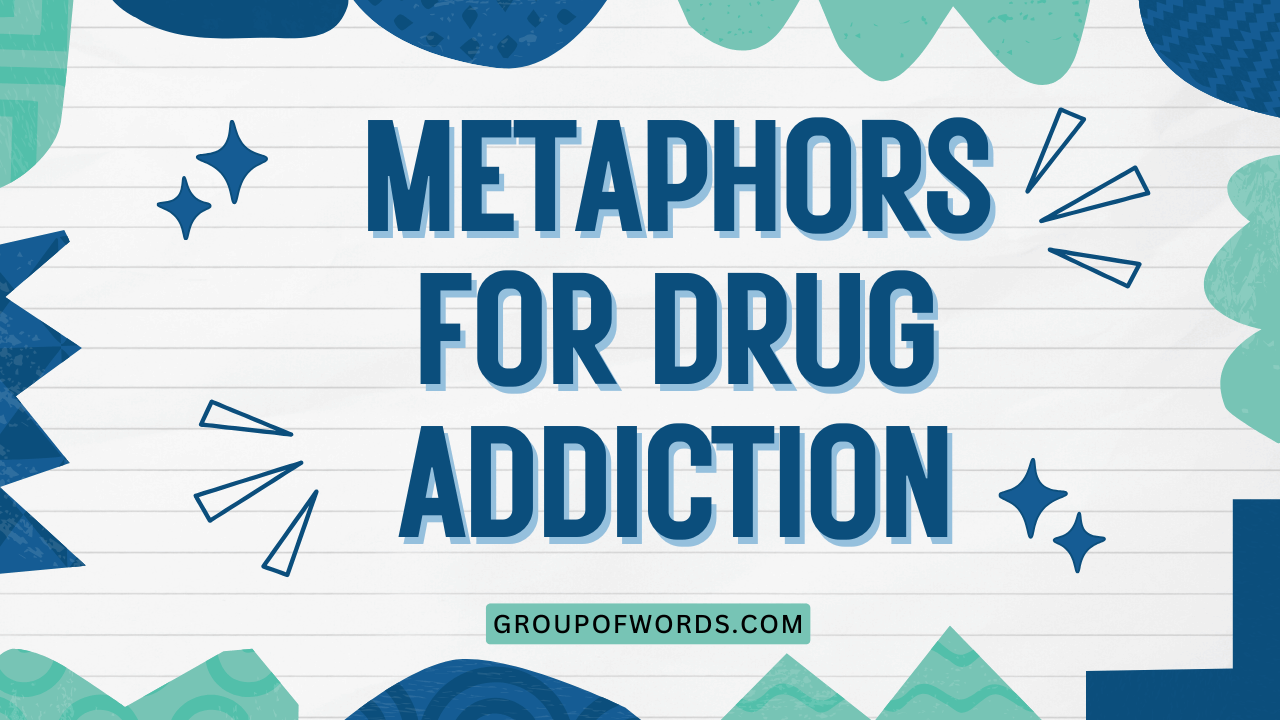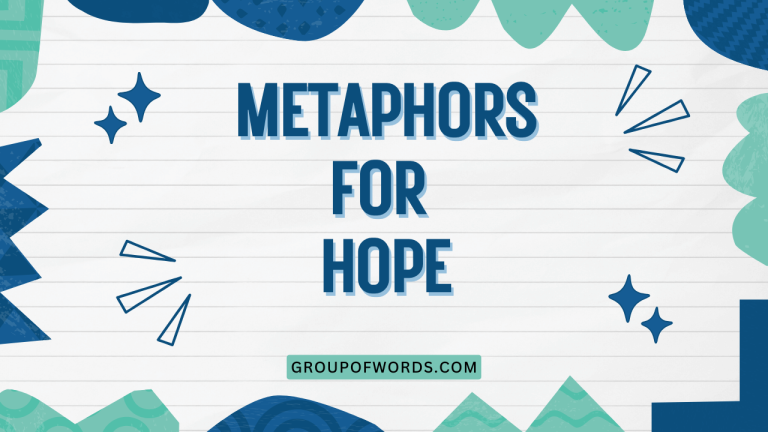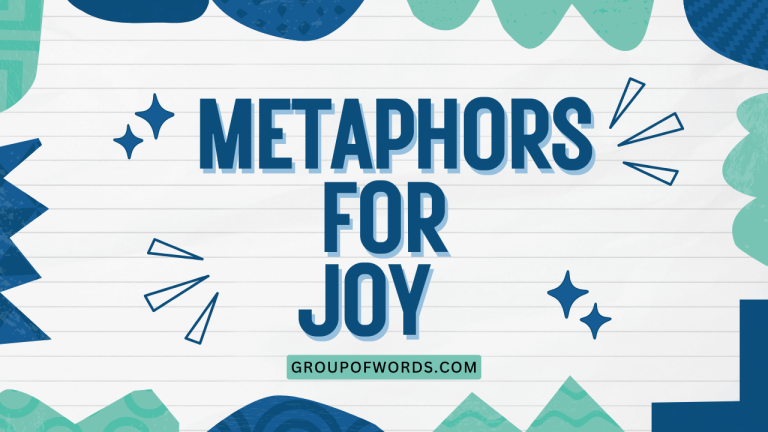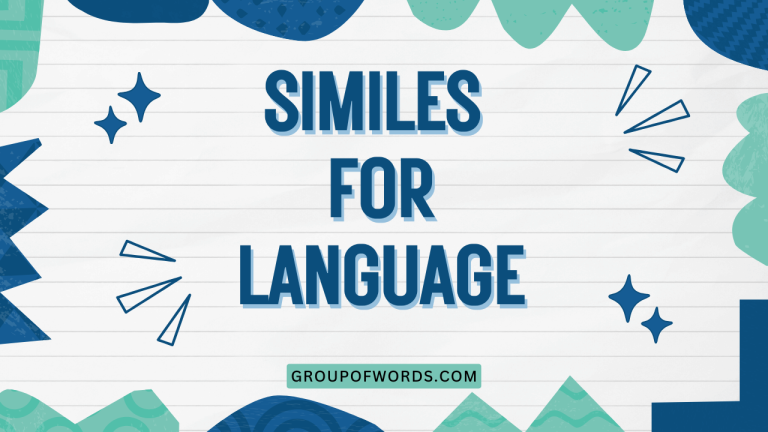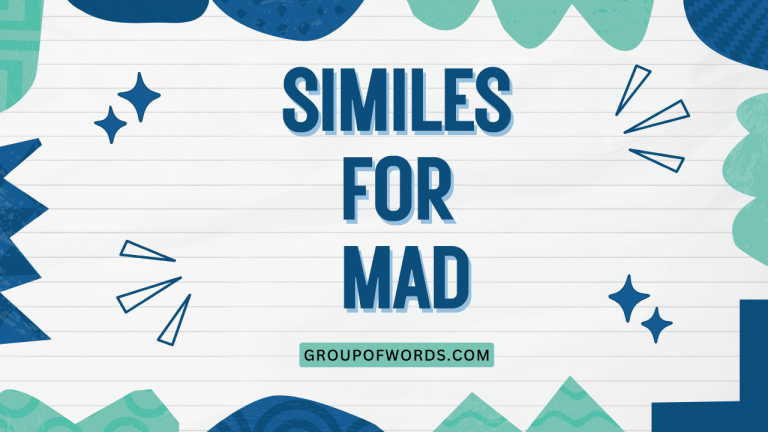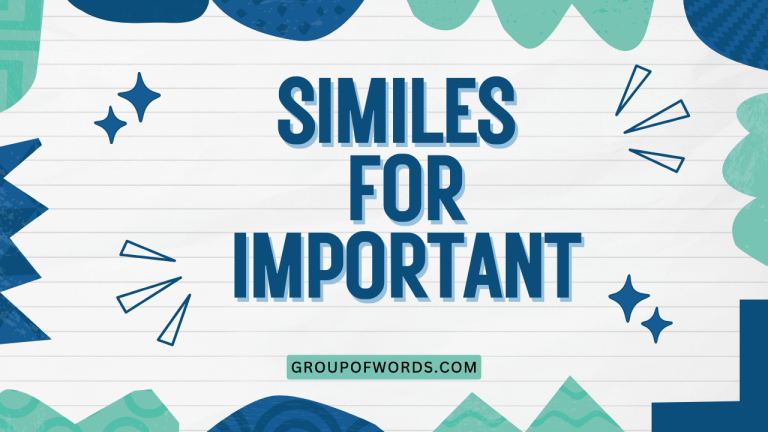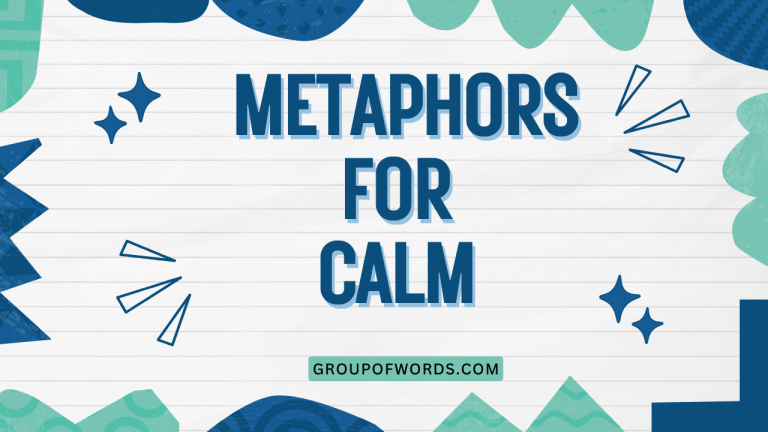Metaphors for Drug Addiction: A Grammatical Exploration
Understanding how we talk about complex issues like drug addiction is crucial. Metaphors shape our perceptions and influence the way we approach solutions.
In English grammar, metaphors related to addiction often employ specific linguistic patterns to convey the intense, often destructive, nature of the condition. This article explores various metaphors used to describe drug addiction, analyzing their grammatical structures and offering examples to enhance comprehension.
This guide benefits students, educators, and anyone interested in the power of language to shape understanding and empathy surrounding addiction.
Table of Contents
- Introduction
- Definition of Metaphor and its Role in Describing Addiction
- Structural Breakdown of Addiction Metaphors
- Types and Categories of Addiction Metaphors
- Examples of Addiction Metaphors
- Usage Rules for Addiction Metaphors
- Common Mistakes in Using Addiction Metaphors
- Practice Exercises
- Advanced Topics: The Ethics of Addiction Metaphors
- FAQ: Frequently Asked Questions
- Conclusion
Definition of Metaphor and its Role in Describing Addiction
A metaphor is a figure of speech that directly compares two unrelated things, asserting that one thing *is* another, not literally, but for rhetorical effect. It allows us to understand abstract or complex concepts by relating them to something more familiar and concrete. Metaphors are powerful tools in language, shaping our understanding and influencing our perceptions. They are fundamental to both thought and language.
In the context of drug addiction, metaphors are particularly crucial. Addiction is a multifaceted phenomenon with complex psychological, physiological, and social dimensions.
Metaphors provide a way to simplify and convey the intensity, destructiveness, and isolating nature of addiction. They help us to understand the experience of someone struggling with addiction, even if we haven’t personally experienced it.
By framing addiction in metaphorical terms, we can evoke empathy and encourage more effective communication about this challenging issue.
Structural Breakdown of Addiction Metaphors
Addiction metaphors, like all metaphors, consist of two key components: the tenor (the subject being described) and the vehicle (the thing used to describe the subject). In the case of addiction metaphors, the tenor is always addiction itself, or the experience of being addicted. The vehicle varies depending on the specific metaphor being used.
For instance, in the metaphor “Addiction is a prison,” the tenor is addiction, and the vehicle is a prison. The metaphor suggests that addiction confines and restricts the individual, similar to how a prison restricts physical freedom.
The effectiveness of a metaphor depends on the strength of the connection between the tenor and the vehicle. A strong metaphor resonates with our understanding of both addiction and the vehicle, creating a powerful and insightful comparison.
Grammatically, addiction metaphors often involve the use of the verb “to be” (is, are, was, were) to directly equate addiction with the chosen vehicle. They can also be expressed through verbs associated with the vehicle (e.g., “Addiction grips him tightly,” using the verb “grips” which is associated with the idea of being physically constrained).
Adjectives related to the vehicle can also be used to describe addiction or its effects (e.g., “the crushing weight of addiction”).
Types and Categories of Addiction Metaphors
Addiction metaphors can be broadly categorized based on the type of vehicle used. Here are some common categories:
Addiction as a Prison
This metaphor emphasizes the feeling of being trapped and controlled by addiction. It highlights the loss of freedom and the difficulty of escaping the cycle of dependence.
The vehicle of a prison evokes images of confinement, restriction, and hopelessness.
Addiction as a Monster
This metaphor portrays addiction as a destructive and malevolent force that consumes the individual. It emphasizes the powerlessness and vulnerability of the person struggling with addiction.
The vehicle of a monster evokes images of fear, danger, and devastation.
Addiction as a Disease
This metaphor frames addiction as a medical condition, emphasizing its biological and psychological aspects. It aims to reduce stigma and promote understanding and treatment.
The vehicle of a disease evokes images of illness, vulnerability, and the need for medical intervention.
Addiction as a Storm
This metaphor captures the tumultuous and chaotic nature of addiction. It highlights the emotional upheaval, the unpredictable cravings, and the destructive consequences.
The vehicle of a storm evokes images of turbulence, destruction, and a sense of being overwhelmed.
Addiction as a Relationship
This metaphor describes addiction as a destructive relationship, highlighting the intense bond, the dependence, and the cycle of highs and lows. It emphasizes the emotional investment and the difficulty of breaking free.
The vehicle of a relationship evokes images of intimacy, conflict, and codependency.
Examples of Addiction Metaphors
Here are examples of addiction metaphors categorized by type, showcasing the diverse ways in which addiction can be described metaphorically.
Addiction as a Prison Examples
The following table provides examples of how addiction is metaphorically represented as a prison, emphasizing the themes of confinement and lack of freedom.
| Metaphor | Explanation |
|---|---|
| Addiction is a cage. | Implies a feeling of being trapped and unable to escape. |
| He’s locked in addiction’s chains. | Suggests a strong, unbreakable bond that restricts movement. |
| She’s serving a life sentence in addiction. | Highlights the long-term and seemingly inescapable nature of addiction. |
| The addiction bars him from happiness. | Suggests that addiction prevents access to joy and fulfillment. |
| His cravings are prison guards, relentless and unforgiving. | Compares cravings to prison guards, emphasizing their constant vigilance and control. |
| I feel trapped in the labyrinth of addiction. | Portrays addiction as a complex and confusing maze from which escape is difficult. |
| Addiction has built walls around her heart. | Suggests emotional isolation and confinement caused by addiction. |
| He’s shackled to his addiction. | Emphasizes the lack of freedom and the burden of addiction. |
| The addiction is a dark cell, isolating him from the world. | Highlights the loneliness and detachment caused by addiction. |
| She’s imprisoned by her own desires. | Suggests that addiction is a self-imposed confinement. |
| Addiction has become his warden. | Portrays addiction as a controlling figure, dictating his actions and thoughts. |
| He’s trapped in a cycle of use and regret, a prison of his own making. | Highlights the repetitive and self-destructive nature of addiction. |
| The addiction is a fortress, difficult to breach. | Suggests the strength and resistance of addiction to treatment. |
| She feels confined by the invisible bars of addiction. | Emphasizes the psychological and emotional restrictions imposed by addiction. |
| Addiction has become his jailer. | Portrays addiction as a controlling figure, dictating his actions and thoughts. |
| He’s trapped in a cycle of use and regret, a prison of his own making. | Highlights the repetitive and self-destructive nature of addiction. |
| The addiction is a fortress, difficult to breach. | Suggests the strength and resistance of addiction to treatment. |
| She feels confined by the invisible bars of addiction. | Emphasizes the psychological and emotional restrictions imposed by addiction. |
| Rehab is his attempt to break free from his prison. | Rehab is his attempt to break free from his prison. |
| The chains of addiction bind him tightly. | The chains of addiction bind him tightly. |
Addiction as a Monster Examples
This table illustrates how addiction is often described as a monster, highlighting its destructive and terrifying nature.
| Metaphor | Explanation |
|---|---|
| Addiction is a beast that consumes him. | Suggests that addiction devours the individual from within. |
| The monster of addiction claws at her soul. | Emphasizes the pain and suffering caused by addiction. |
| He’s battling the demon of addiction. | Portrays addiction as an evil force that must be fought. |
| Addiction is a ravenous wolf, always hungry for more. | Highlights the insatiable nature of addiction. |
| The cravings are monsters lurking in the shadows. | Compares cravings to monsters, emphasizing their threat and unpredictability. |
| Addiction is a vampire, sucking the life out of him. | Suggests that addiction drains the individual of their vitality. |
| The tentacles of addiction wrap around her, suffocating her. | Emphasizes the all-encompassing and oppressive nature of addiction. |
| Addiction is a hydra, with every head cut off, two more grow back. | Highlights the resilience and persistence of addiction. |
| He’s haunted by the ghost of his addiction. | Suggests that the effects of addiction linger even after sobriety. |
| Addiction is a parasite, feeding off his weaknesses. | Emphasizes the exploitative nature of addiction. |
| The addiction is a gremlin, wreaking havoc on his life. | Portrays addiction as a mischievous and destructive force. |
| She’s wrestling with the beast within. | Suggests an internal struggle against the addictive impulse. |
| Addiction is a serpent, coiling around his heart. | Emphasizes the insidious and constricting nature of addiction. |
| The monster of addiction has taken control of his mind. | Highlights the loss of control and the dominance of addiction. |
| He’s fighting a losing battle against the monster within. | Suggests the overwhelming power and difficulty of overcoming addiction. |
| The addiction is a shadow that follows him everywhere. | Emphasizes the constant presence and influence of addiction. |
| She’s trying to slay the dragon of addiction. | Portrays addiction as a formidable and dangerous enemy. |
| Addiction is a ghoul, feeding on his hopes and dreams. | Highlights the destructive impact of addiction on aspirations. |
| The monster of addiction has devoured his relationships. | Emphasizes the devastating effect of addiction on social connections. |
| Addiction is a creeping horror, slowly consuming her. | Addiction is a creeping horror, slowly consuming her. |
| She’s battling the demons of her past, fueled by addiction. | She’s battling the demons of her past, fueled by addiction. |
Addiction as a Disease Examples
The subsequent table provides examples of how addiction can be framed as a disease, which helps to destigmatize the condition and encourage treatment.
| Metaphor | Explanation |
|---|---|
| Addiction is a chronic illness. | Emphasizes the long-term and persistent nature of addiction. |
| He’s suffering from the disease of addiction. | Frames addiction as a medical condition requiring treatment. |
| She’s battling the symptoms of addiction. | Highlights the physical and psychological manifestations of addiction. |
| Addiction is a progressive disease. | Suggests that addiction worsens over time if left untreated. |
| The cravings are symptoms of her addiction. | Compares cravings to symptoms, emphasizing their medical nature. |
| He’s seeking treatment for his addiction. | Frames addiction as a condition that can be treated by medical professionals. |
| Addiction has infected his mind. | Suggests that addiction has taken over his thoughts and behaviors. |
| She’s in recovery from the disease of addiction. | Highlights the ongoing process of healing and managing addiction. |
| Addiction is a sickness that needs to be healed. | Emphasizes the need for compassion and understanding. |
| He’s managing his addiction with medication and therapy. | Suggests that addiction can be controlled through medical interventions. |
| Addiction is a virus that has taken hold of his life. | Portrays addiction as a rapidly spreading and destructive force. |
| She’s fighting the relapse, a common symptom of addiction. | Highlights the challenges of maintaining sobriety. |
| Addiction is a disorder that affects the brain. | Emphasizes the neurological basis of addiction. |
| He’s learning to cope with the chronic pain of addiction. | Suggests that addiction can cause long-term suffering. |
| Addiction is a condition that requires ongoing care. | Highlights the need for continuous support and treatment. |
| She’s seeking a cure for her addiction. | She’s seeking a cure for her addiction. |
| Addiction is a plague on his life. | Addiction is a plague on his life. |
| He is diagnosed with addiction. | He is diagnosed with addiction. |
| His addiction is in remission. | His addiction is in remission. |
| Addiction is an epidemic. | Addiction is an epidemic. |
Addiction as a Storm Examples
This table provides examples of how addiction is metaphorically described as a storm, emphasizing the chaotic and destructive effects.
| Metaphor | Explanation |
|---|---|
| Addiction is a tempest raging within him. | Highlights the intense emotional turmoil caused by addiction. |
| She’s caught in the storm of addiction. | Emphasizes the feeling of being overwhelmed and helpless. |
| The cravings are the thunder of her addiction. | Compares cravings to thunder, emphasizing their powerful and disruptive nature. |
| Addiction is a hurricane, leaving devastation in its wake. | Suggests that addiction causes widespread destruction. |
| He’s weathering the storm of withdrawal. | Highlights the difficulty and discomfort of overcoming withdrawal symptoms. |
| Addiction has flooded his life with chaos. | Emphasizes the disruptive and overwhelming nature of addiction. |
| She’s navigating the turbulent waters of addiction. | Suggests that addiction is a difficult and dangerous journey. |
| Addiction is a tsunami, crashing over his hopes and dreams. | Highlights the destructive impact of addiction on aspirations. |
| He’s drowning in the storm of his addiction. | Emphasizes the feeling of being overwhelmed and suffocated. |
| Addiction is a whirlwind, spinning out of control. | Suggests that addiction leads to a loss of control and stability. |
| She’s trying to find shelter from the storm of addiction. | Highlights the need for safety and support during recovery. |
| Addiction is a blizzard, blinding him to the truth. | Emphasizes the deceptive and disorienting nature of addiction. |
| He’s caught in the crosscurrents of addiction. | Suggests the conflicting emotions and impulses associated with addiction. |
| Addiction is a downpour, washing away his relationships. | Highlights the destructive impact of addiction on social connections. |
| She’s struggling to stay afloat in the storm of her addiction. | Emphasizes the constant effort required to maintain sobriety. |
| Addiction is a tempest, tossing him about relentlessly. | Highlights the unpredictable and chaotic nature of addiction. |
| The storm of addiction has ravaged his life. | Suggests the extensive damage caused by addiction. |
| She’s seeking calm after the storm of addiction. | Emphasizes the desire for peace and stability after recovery. |
| Addiction is a squall, hitting him without warning. | Highlights the sudden and unexpected nature of cravings and relapses. |
| He is lost at sea in his addiction. | He is lost at sea in his addiction. |
Addiction as a Relationship Examples
The following table illustrates how addiction is metaphorically represented as a relationship, emphasizing the intense bond and dependence.
| Metaphor | Explanation |
|---|---|
| Addiction is a toxic relationship. | Highlights the harmful and destructive nature of addiction. |
| He’s in a codependent relationship with his addiction. | Emphasizes the unhealthy dependence and enabling behaviors. |
| She’s breaking up with her addiction. | Frames recovery as a process of ending a harmful relationship. |
| Addiction is his only companion. | Suggests that addiction provides a false sense of connection and belonging. |
| The cravings are the whispers of her addiction. | Compares cravings to the voice of a seductive but harmful partner. |
| He’s addicted to the highs and lows of his addiction. | Highlights the emotional rollercoaster associated with addiction. |
| Addiction is a demanding lover, always wanting more. | Emphasizes the insatiable and selfish nature of addiction. |
| She’s trying to distance herself from her addiction. | Suggests the need to create physical and emotional space from the addictive substance. |
| Addiction is a jealous partner, isolating him from others. | Highlights the possessive and controlling nature of addiction. |
| He’s trapped in a love-hate relationship with his addiction. | Emphasizes the conflicting emotions of desire and regret. |
| Addiction is a seductive mistress, promising pleasure but delivering pain. | Highlights the deceptive nature of addiction. |
| She’s trying to rebuild her life after the breakup with addiction. | Suggests that recovery is a process of healing and moving on. |
| Addiction is a controlling spouse, dictating his every move. | Emphasizes the loss of autonomy and the dominance of addiction. |
| He’s grieving the loss of his relationship with addiction. | Highlights the emotional pain associated with letting go of addiction. |
| Addiction is a clingy ex, always trying to pull her back in. | Emphasizes the persistent temptation and the risk of relapse. |
| She’s seeking therapy to understand her relationship with addiction. | Suggests the need for professional help to address the underlying issues. |
| Addiction is a parasitic twin, draining his energy and resources. | Highlights the exploitative and destructive nature of addiction. |
| He’s trying to redefine his identity after addiction. | Emphasizes the need to create a new sense of self without addiction. |
| Addiction is his only friend. | Addiction is his only friend. |
| She is married to her addiction. | She is married to her addiction. |
Usage Rules for Addiction Metaphors
While metaphors are inherently creative and flexible, there are some guidelines to consider when using addiction metaphors:
- Be mindful of the context: Consider your audience and the purpose of your communication. Some metaphors may be more appropriate or effective than others depending on the situation.
- Avoid trivializing addiction: Choose metaphors that accurately reflect the seriousness and complexity of addiction. Avoid metaphors that are flippant or dismissive.
- Be consistent: Once you’ve chosen a metaphor, maintain consistency throughout your communication. Mixing metaphors can be confusing and weaken the impact of your message.
- Consider the connotations: Be aware of the emotional associations of the vehicle you choose. Some vehicles may evoke negative or stigmatizing images that could be counterproductive.
- Use metaphors to enhance understanding, not to replace it: Metaphors should complement factual information and provide a deeper understanding of addiction. They should not be used as a substitute for accurate and comprehensive information.
Common Mistakes in Using Addiction Metaphors
Here are some common mistakes to avoid when using metaphors to describe addiction:
| Incorrect | Correct | Explanation |
|---|---|---|
| Addiction is a fun rollercoaster. | Addiction is a terrifying rollercoaster. | The incorrect metaphor trivializes the negative aspects of addiction. |
| He’s lightly chained to his addiction. | He’s heavily chained to his addiction. | The incorrect metaphor understates the restrictive power of addiction. |
| Addiction is a friendly pet. | Addiction is a ravenous beast. | The incorrect metaphor inaccurately portrays addiction as harmless. |
| She is casually dating her addiction. | She is trapped in a toxic marriage with her addiction. | The incorrect metaphor inaccurately portrays addiction as harmless. |
| Addiction is a walk in the park. | Addiction is a treacherous journey through a dark forest. | The incorrect metaphor inaccurately portrays addiction as harmless. |
Practice Exercises
Test your understanding of addiction metaphors with these exercises.
Exercise 1: Identifying Metaphors
Identify the metaphor in each of the following sentences and explain what it conveys about addiction.
| Question | Answer |
|---|---|
| 1. Addiction is a dark cloud hanging over his life. | Metaphor: Addiction is a dark cloud. Explanation: It conveys the pervasive and oppressive nature of addiction. |
| 2. She’s trying to untangle herself from the web of addiction. | Metaphor: Addiction is a web. Explanation: It conveys the feeling of being trapped and ensnared. |
| 3. Addiction has stolen his soul. | Metaphor: Addiction is a thief. Explanation: It conveys the loss of identity and essence caused by addiction. |
| 4. He’s drowning in a sea of addiction. | Metaphor: Addiction is a sea. Explanation: It conveys the feeling of being overwhelmed and helpless. |
| 5. Addiction is a shadow that follows her everywhere. | Metaphor: Addiction is a shadow. Explanation: It conveys the constant presence and influence of addiction. |
| 6. The grip of addiction tightened around his heart. | Metaphor: Addiction has a physical grip. Explanation: It shows the strength and control of addiction. |
| 7. Overcoming addiction is like climbing a steep mountain. | Metaphor: Overcoming addiction is like climbing a steep mountain. Explanation: It conveys the arduous and challenging nature of recovery. |
| 8. His addiction was a bottomless pit. | Metaphor: Addiction is a bottomless pit. Explanation: It conveys the insatiable nature of addiction. |
| 9. Her addiction was a ticking time bomb. | Metaphor: Addiction is a ticking time bomb. Explanation: It conveys the dangerous and unstable nature of addiction. |
| 10. His addiction was a ball and chain. | Metaphor: Addiction is a ball and chain. Explanation: It conveys the restrictive and burdensome nature of addiction. |
Exercise 2: Creating Metaphors
Complete the following sentences by creating a suitable metaphor for addiction.
| Question | Answer |
|---|---|
| 1. Addiction is like a __________, constantly whispering temptations. | Addiction is like a devil, constantly whispering temptations. |
| 2. He feels as though he’s trapped in a __________, unable to escape the cycle of addiction. | He feels as though he’s trapped in a maze, unable to escape the cycle of addiction. |
| 3. Her addiction is a __________, slowly poisoning her life and relationships. | Her addiction is a venom, slowly poisoning her life and relationships. |
| 4. Overcoming addiction is like escaping from a __________, requiring strength and determination. | Overcoming addiction is like escaping from a burning building, requiring strength and determination. |
| 5. The cravings are like __________, constantly gnawing at his willpower. | The cravings are like hungry wolves, constantly gnawing at his willpower. |
| 6. Addiction is a __________, slowly eroding her sense of self. | Addiction is a rust, slowly eroding her sense of self. |
| 7. He is trying to break free from his __________, addiction. | He is trying to break free from his captor, addiction. |
| 8. Addiction is the __________ in his garden. | Addiction is the weeds in his garden. |
| 9. Her addiction is a __________ around her neck. | Her addiction is a noose around her neck. |
| 10. His addiction is a __________ in his armor. | His addiction is a crack in his armor. |
Advanced Topics: The Ethics of Addiction Metaphors
The metaphors we use to describe addiction can have a significant impact on how we perceive and treat individuals struggling with substance use disorders. It is crucial to consider the ethical implications of these metaphors and ensure that they promote empathy, understanding, and effective treatment.
Some metaphors, such as “addiction as a moral failing,” can perpetuate stigma and blame, leading to discrimination and hindering access to care. On the other hand, metaphors like “addiction as a disease” can reduce stigma and promote a more compassionate and evidence-based approach.
However, even seemingly positive metaphors can have unintended consequences. For example, framing addiction solely as a disease might overlook the social and environmental factors that contribute to substance use disorders.
Therefore, it is essential to critically evaluate the metaphors we use and consider their potential impact on individuals and communities affected by addiction. We should strive to use metaphors that are accurate, respectful, and promote a holistic understanding of addiction as a complex biopsychosocial phenomenon.
FAQ: Frequently Asked Questions
- What is the purpose of using metaphors for addiction?
Metaphors help simplify complex concepts, making addiction more understandable and relatable. They evoke empathy and can influence how we perceive and address addiction.
- Can metaphors for addiction be harmful?
Yes, some metaphors can perpetuate stigma, blame individuals, or oversimplify the issue, hindering effective treatment and understanding. It’s important to choose metaphors carefully.
- Why is “addiction as a disease” a common metaphor?
This metaphor aims to destigmatize addiction by framing it as a medical condition requiring treatment rather than a moral failing. It promotes compassion and evidence-based approaches.
- How do I choose the right metaphor for addiction?
Consider your audience, the context, and the message you want to convey. Choose metaphors that are accurate, respectful, and promote a holistic understanding of addiction.
- What are some examples of stigmatizing metaphors for addiction?
Examples include “addict as a criminal,” “addiction as a moral weakness,” or “addict as a lost cause.” These metaphors reinforce negative stereotypes and hinder recovery.
- How can I avoid using harmful metaphors for addiction?
Be mindful of the connotations of your language. Choose metaphors that emphasize the complexity of addiction, the possibility of recovery, and the need for support and compassion.
- Are there any metaphors that are universally considered appropriate for addiction?
No single metaphor is universally appropriate. The best metaphor depends on the specific context and the individual’s perspective. However, metaphors that emphasize hope, resilience, and the possibility of recovery are generally preferred.
- What role do metaphors play in addiction recovery?
Metaphors can help individuals understand their experiences, find meaning in their struggles, and develop coping strategies. They can also provide a sense of hope and connection, fostering resilience and promoting recovery.
Conclusion
Metaphors for drug addiction are powerful linguistic tools that shape our understanding and influence our responses to this complex issue. By analyzing the grammatical structures and exploring the diverse range of metaphors used, we gain a deeper appreciation for the role of language in shaping perceptions and fostering empathy.
Choosing appropriate and ethical metaphors is crucial for promoting understanding, reducing stigma, and supporting effective treatment and recovery.
Remember to be mindful of the context, avoid trivializing addiction, and consider the connotations of your language. By using metaphors thoughtfully and responsibly, we can contribute to a more compassionate and informed dialogue about drug addiction.
This understanding benefits not only students and educators but anyone seeking to communicate effectively about this challenging and important topic.
